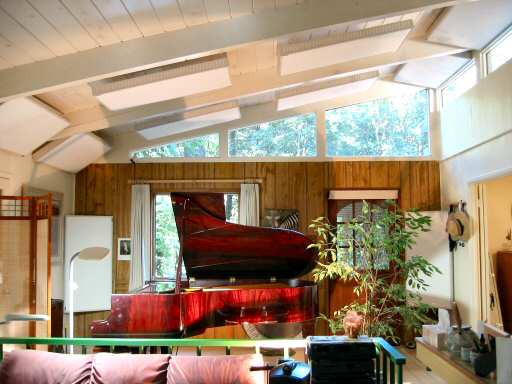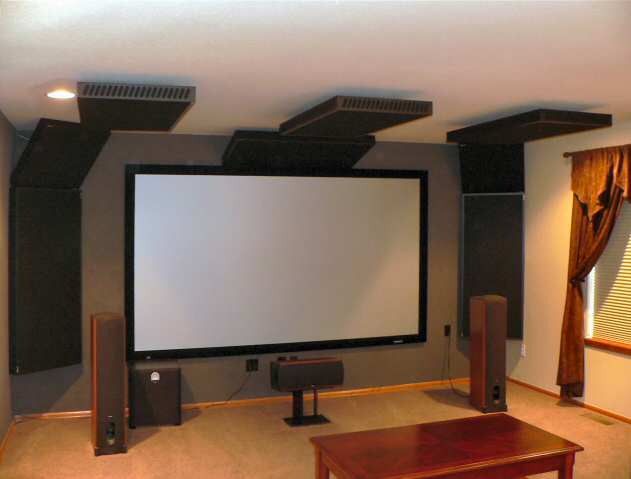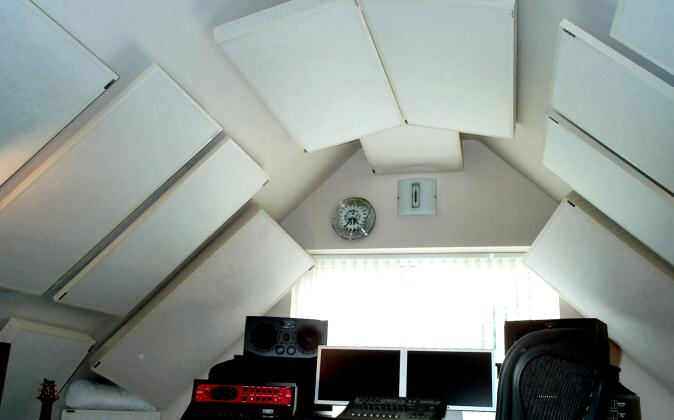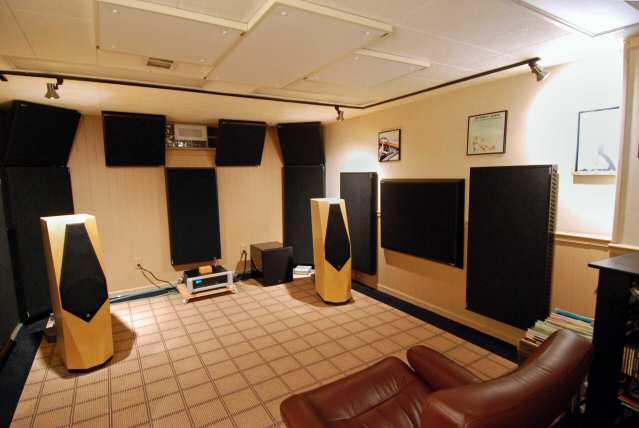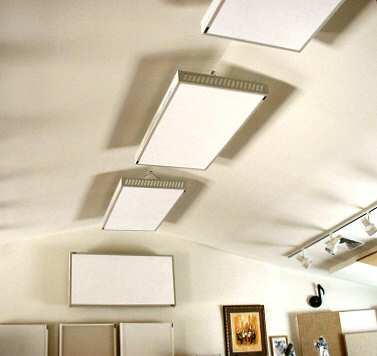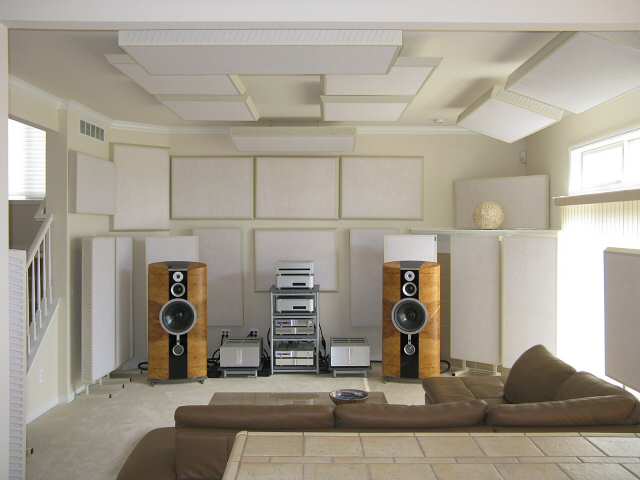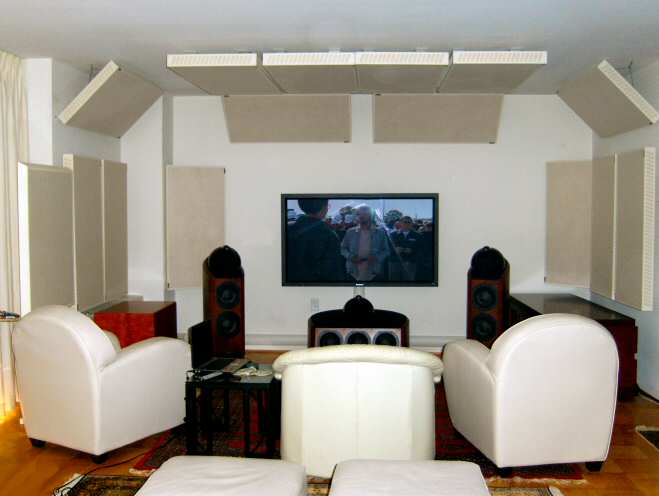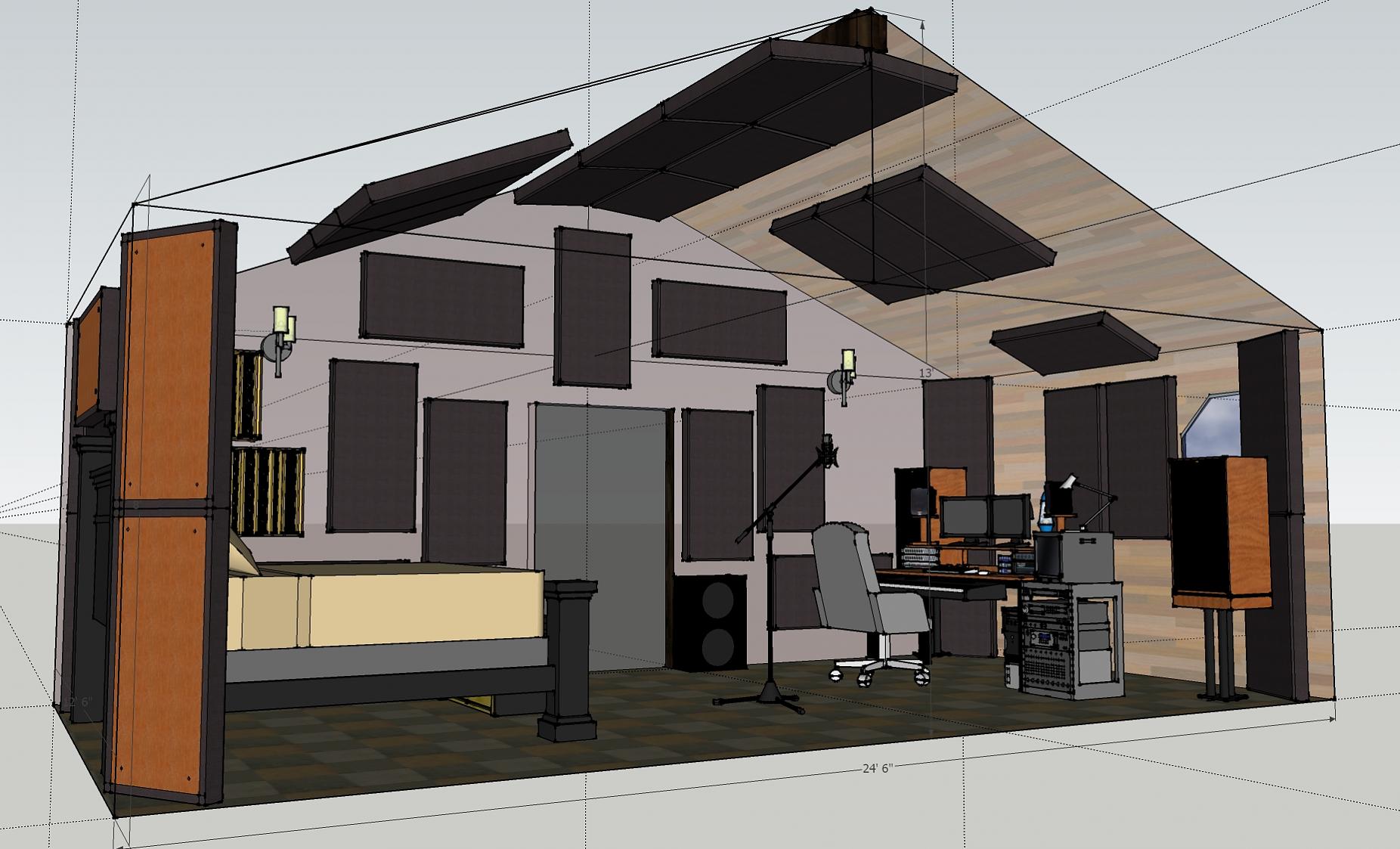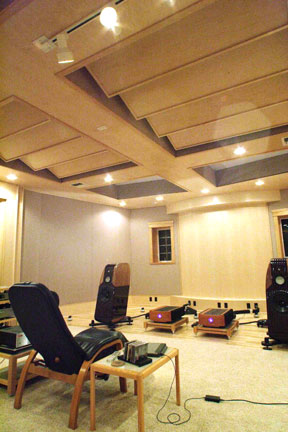shaizada
Active Member
I've been in this hobby for many many years now. Through the maniacal change of equipment we often overlook the most important part of the room...
the room itself.
Without a doubt, a properly treated room is probably the most important factor in true listening. We often judge equipment without actually hearing the full potential of the component or system because the room never let you fully realize the sound.
Every room has peaks and valleys in regards to its sound spectrum. Hence every room has a different resonant peaks and different bass response. What we hear in an untreated room is a summation of ALL those sound anomalies.
As an example, walk towards one of the corners of the room while the music is playing. You will notice an increase in the bass response and a very weird sound as compared to your (hopefully) centered listening position. All these sounds come together and muddy the true audio that we would be listening in a well treated environment. How we really listen to a stereo system is extremely important before we can pass judgement on what a speaker sounds like, what amplifier is doing and what wiring has what sound.
In a properly treated room, it will be black and white to a person what a single change in the system is doing.
Also, it is important to not overdo acoustic panels as they can totally rob the sound of all the liveliness and dynamics. There is a fine balance to this. I have been to showrooms in Delhi that have the whole listening room COMPLETELY covered with acoustic material. The equipment was B&W 800d and Classe amplifiers. Whats the point of demoing components like this if you can't let the listener actually hear what they are doing?
Anyhow, I've started this thread for an educationally enlightening perspective so that we ALL can understand and move forward in this hobby. It should be all about the music in the end ..... and this is all just a part of the journey.
Here is an example of how I've treated my room. My ceiling in front of the room starts at about 9ft. and slants upwards to the back to about 20ft at the back wall. This is a cathedral ceiling and was a perfect choice for a dedicated room in my house.
This should give you an idea of the BACK of the room (The black area in the top right is NOT any room treatment. Its just the program I used to stitch the photos together):

This is the front of the room:

Let's discuss if you like....this thread is purely for knowledge sharing.
~Gaurav
the room itself.
Without a doubt, a properly treated room is probably the most important factor in true listening. We often judge equipment without actually hearing the full potential of the component or system because the room never let you fully realize the sound.
Every room has peaks and valleys in regards to its sound spectrum. Hence every room has a different resonant peaks and different bass response. What we hear in an untreated room is a summation of ALL those sound anomalies.
As an example, walk towards one of the corners of the room while the music is playing. You will notice an increase in the bass response and a very weird sound as compared to your (hopefully) centered listening position. All these sounds come together and muddy the true audio that we would be listening in a well treated environment. How we really listen to a stereo system is extremely important before we can pass judgement on what a speaker sounds like, what amplifier is doing and what wiring has what sound.
In a properly treated room, it will be black and white to a person what a single change in the system is doing.
Also, it is important to not overdo acoustic panels as they can totally rob the sound of all the liveliness and dynamics. There is a fine balance to this. I have been to showrooms in Delhi that have the whole listening room COMPLETELY covered with acoustic material. The equipment was B&W 800d and Classe amplifiers. Whats the point of demoing components like this if you can't let the listener actually hear what they are doing?
Anyhow, I've started this thread for an educationally enlightening perspective so that we ALL can understand and move forward in this hobby. It should be all about the music in the end ..... and this is all just a part of the journey.
Here is an example of how I've treated my room. My ceiling in front of the room starts at about 9ft. and slants upwards to the back to about 20ft at the back wall. This is a cathedral ceiling and was a perfect choice for a dedicated room in my house.
This should give you an idea of the BACK of the room (The black area in the top right is NOT any room treatment. Its just the program I used to stitch the photos together):

This is the front of the room:

Let's discuss if you like....this thread is purely for knowledge sharing.
~Gaurav
Last edited:


